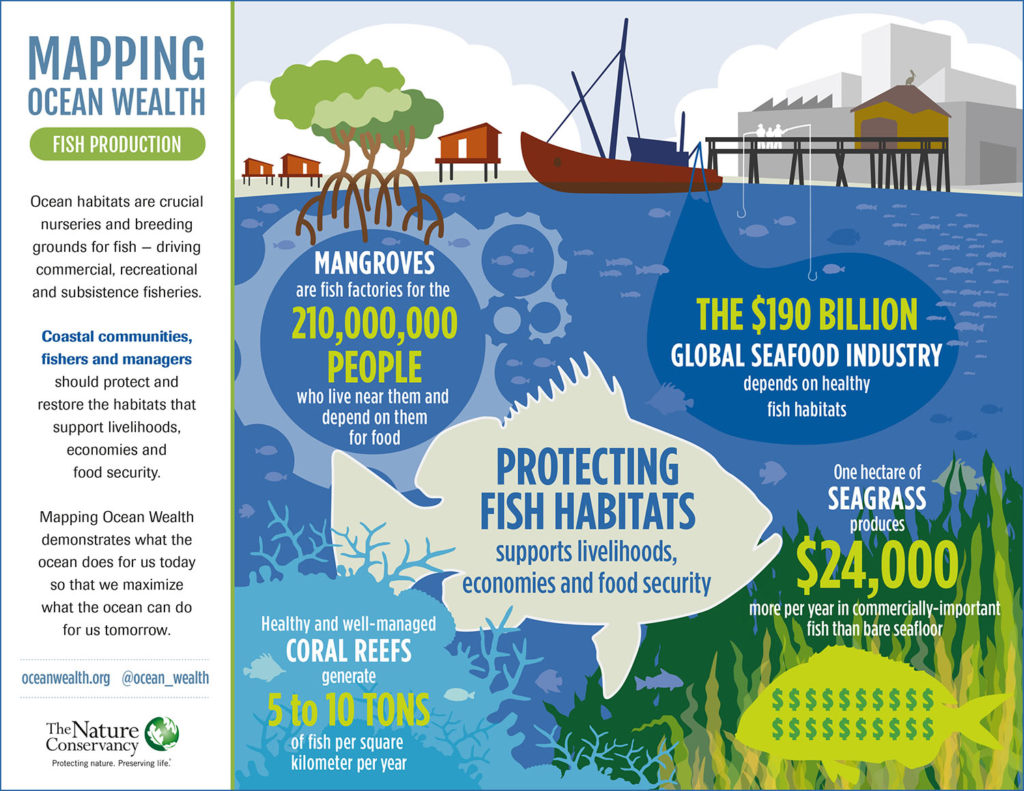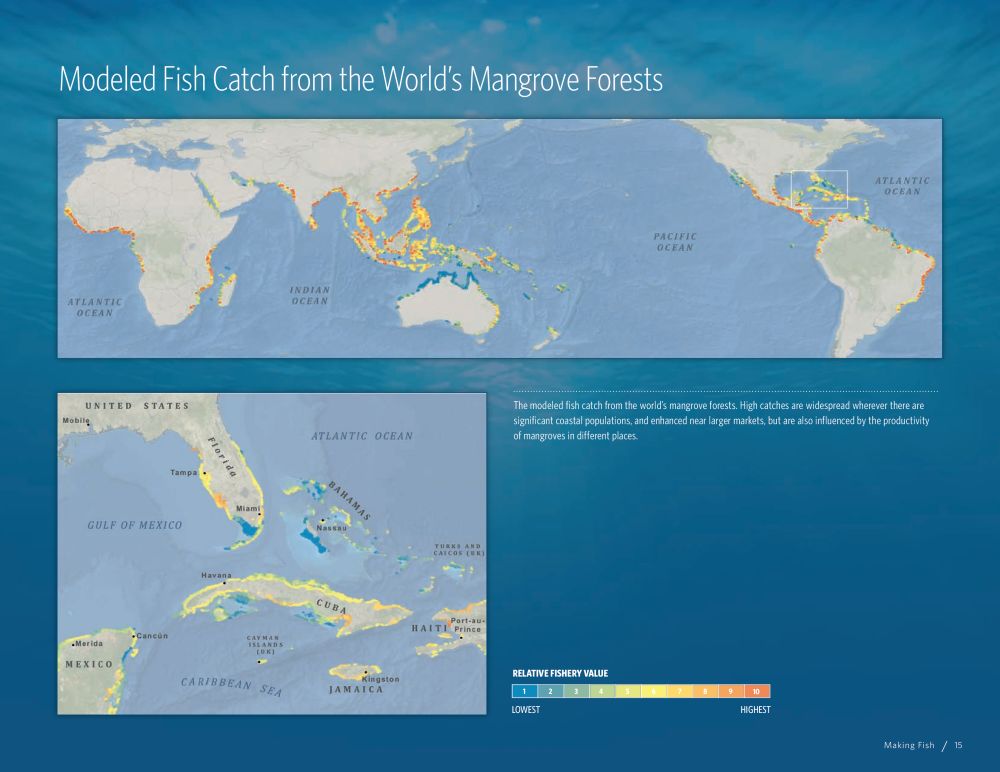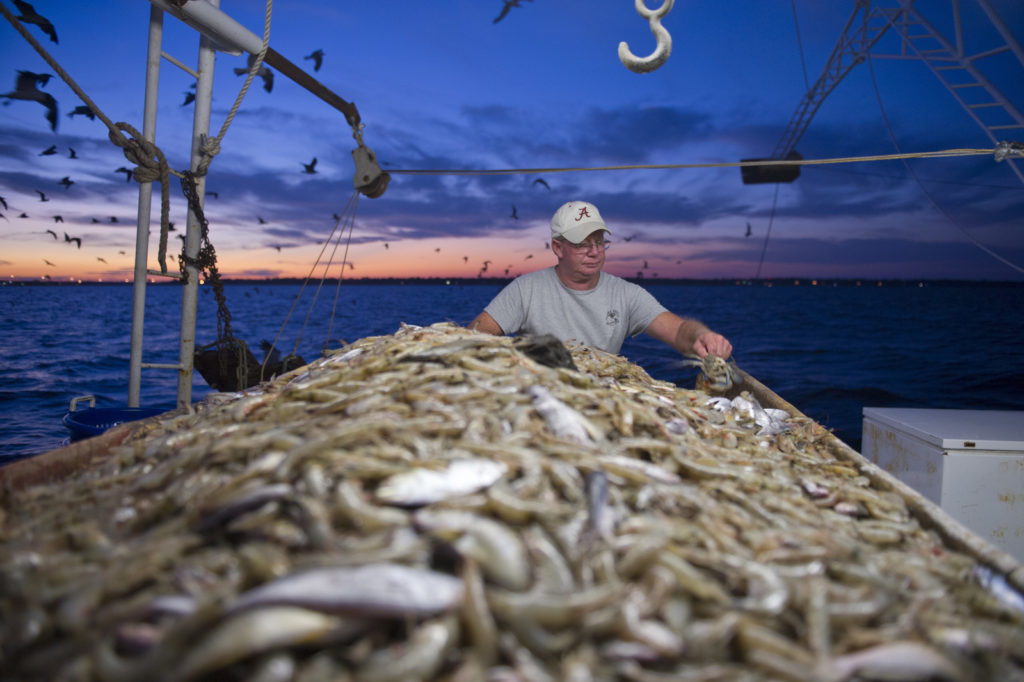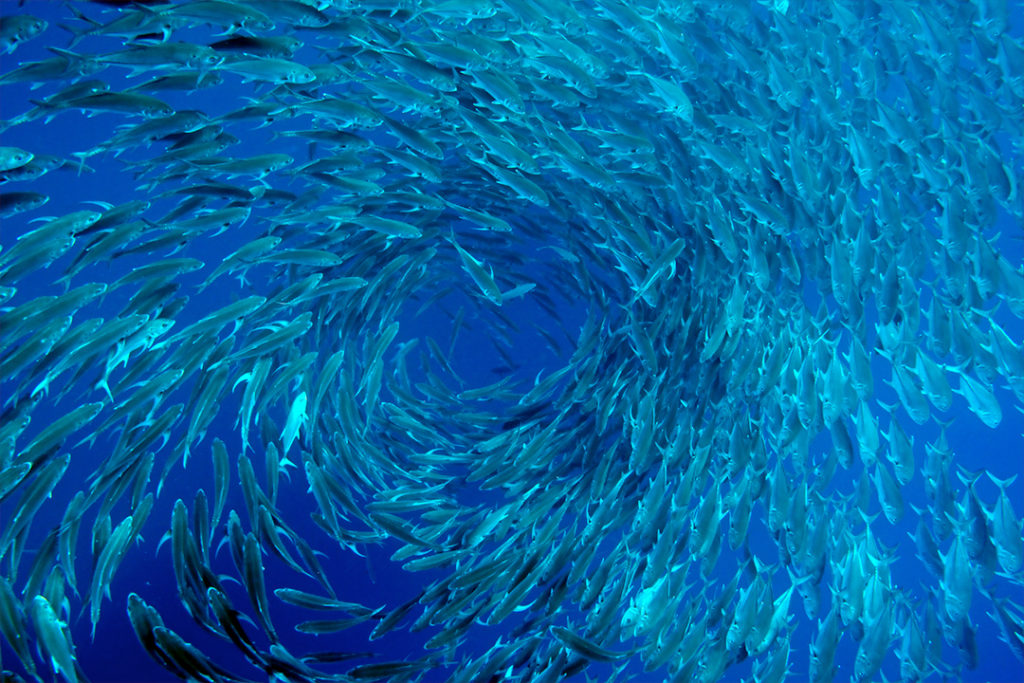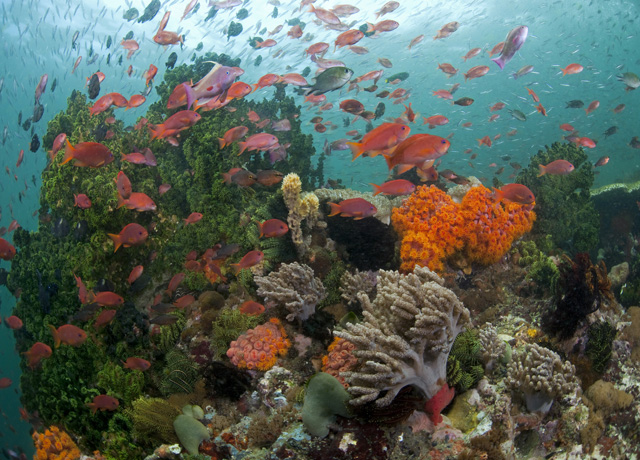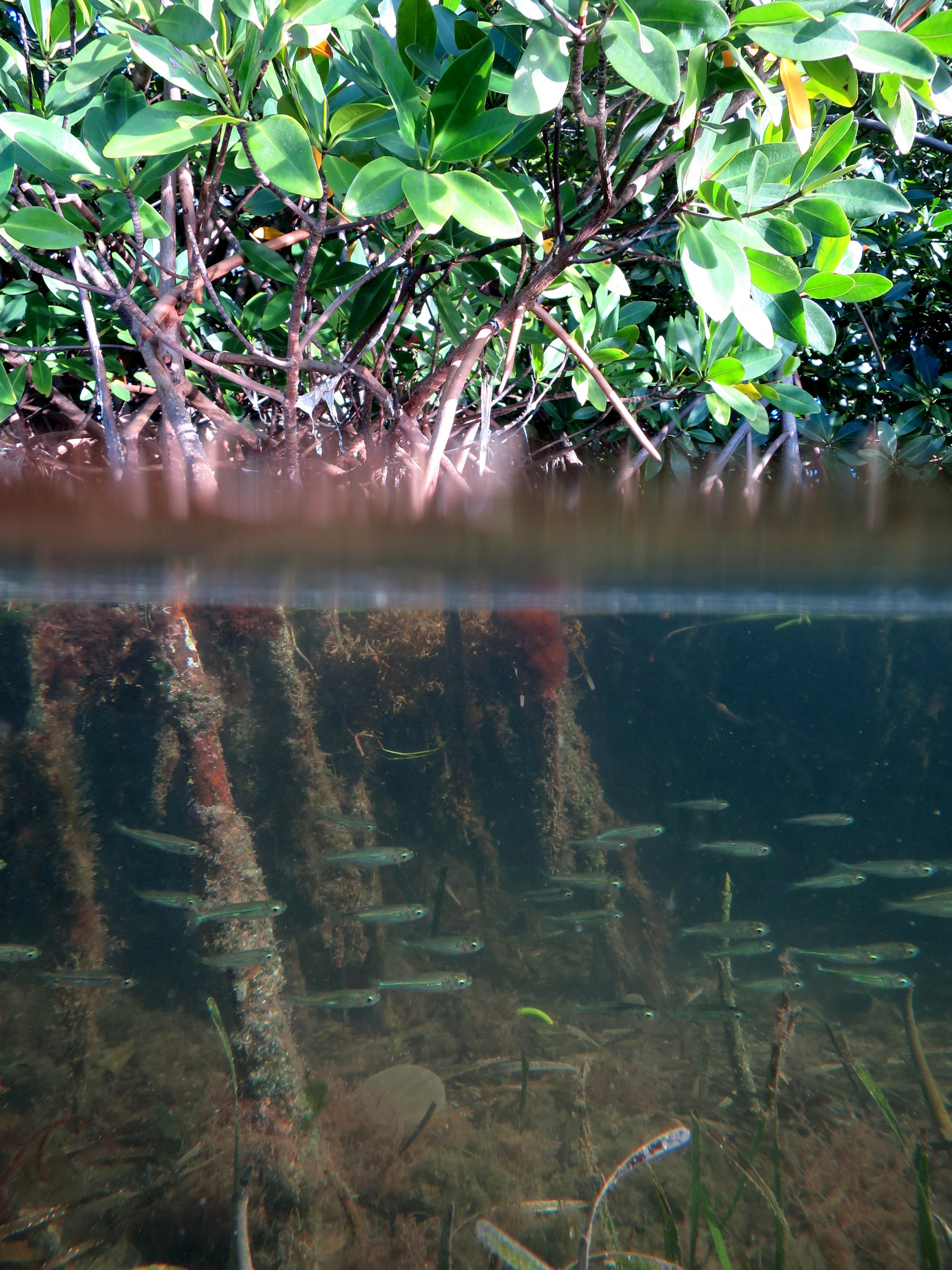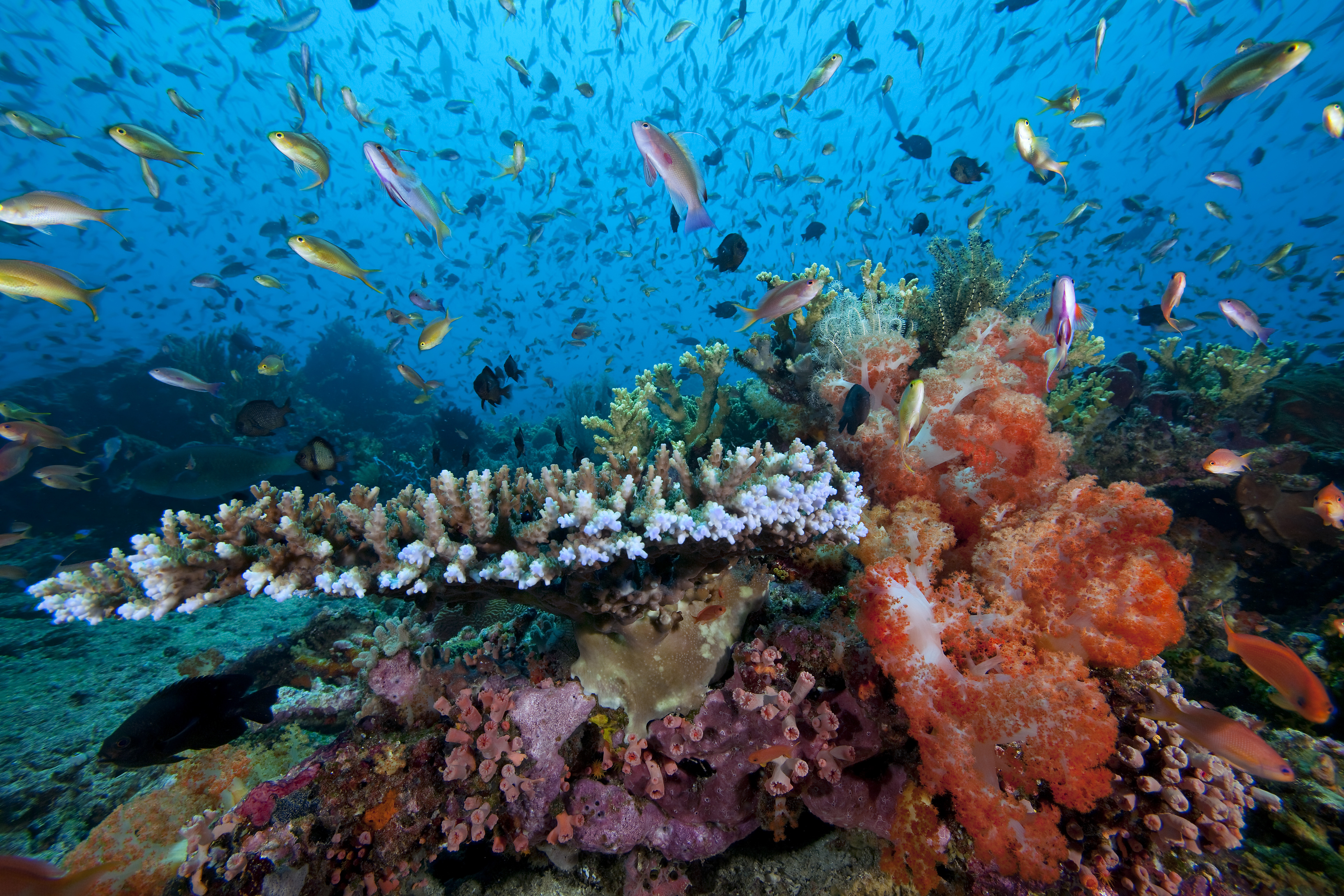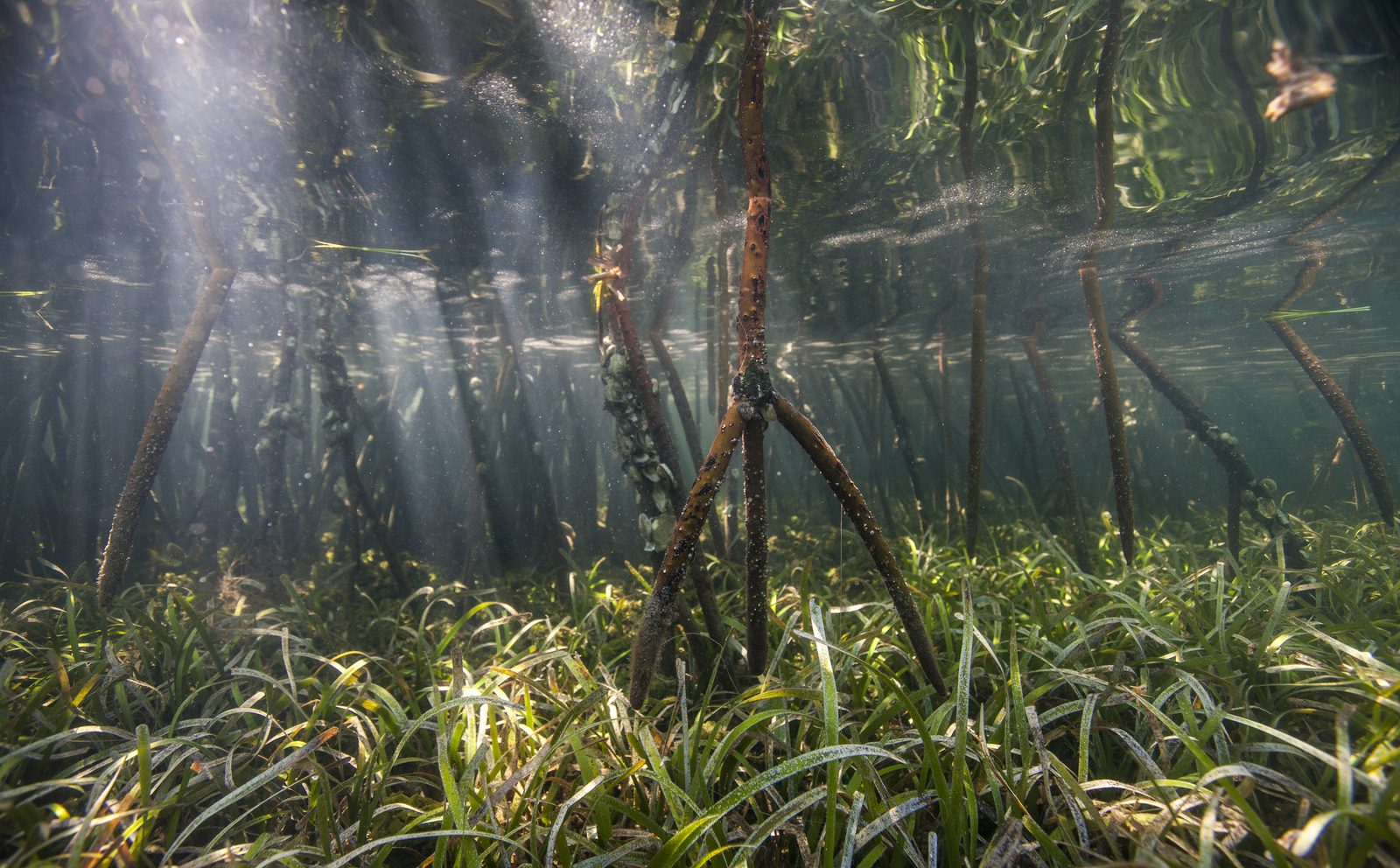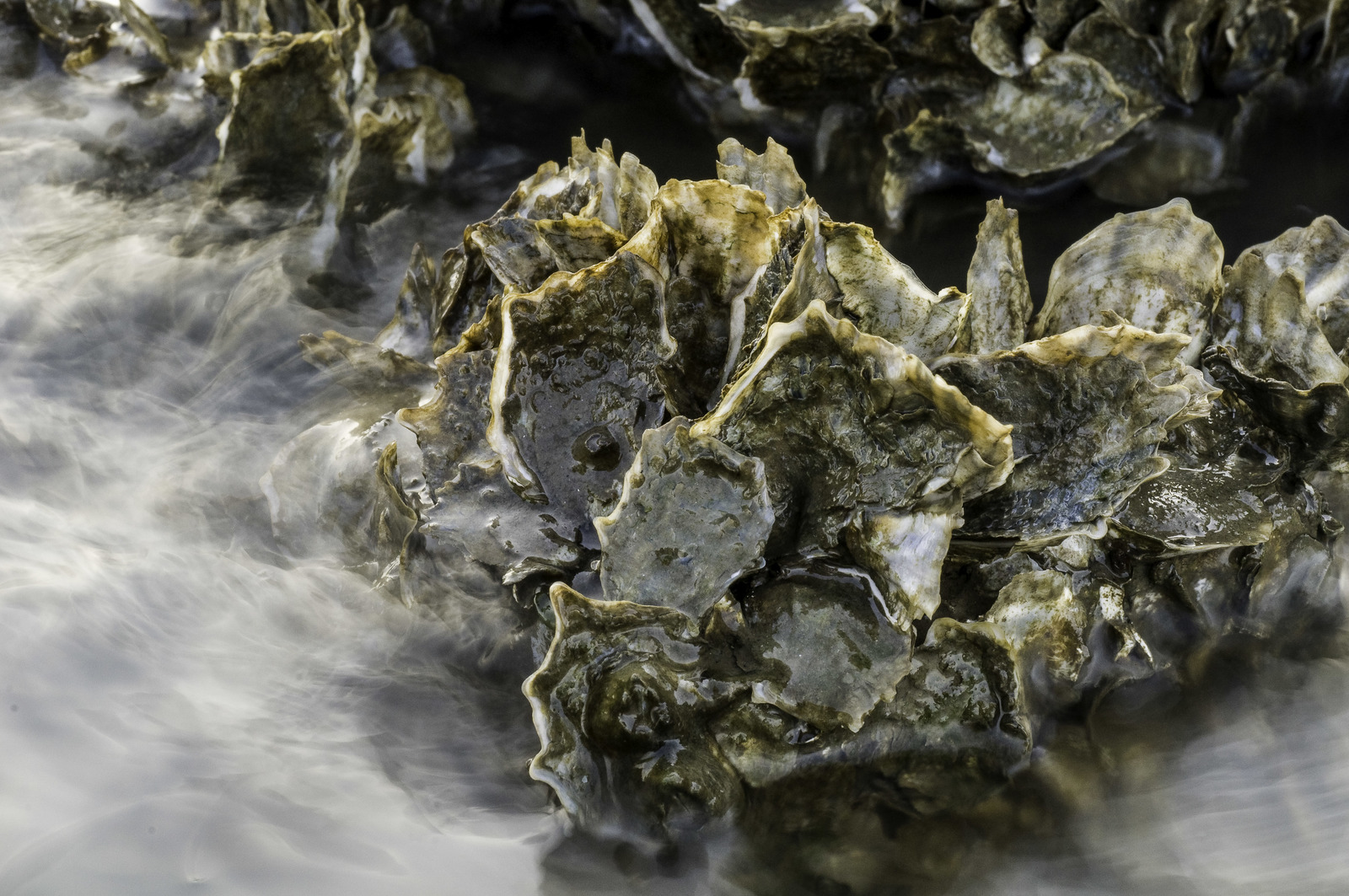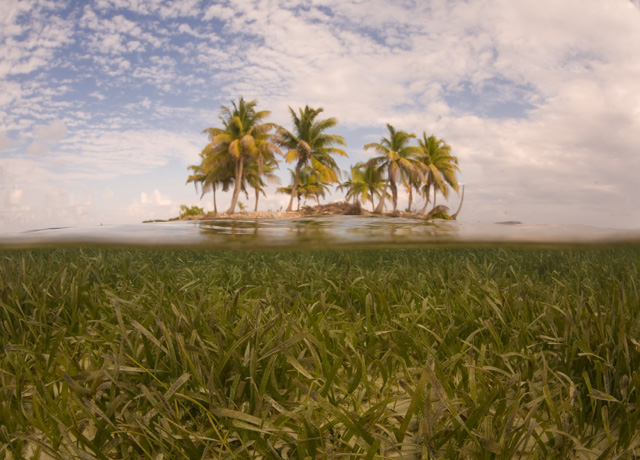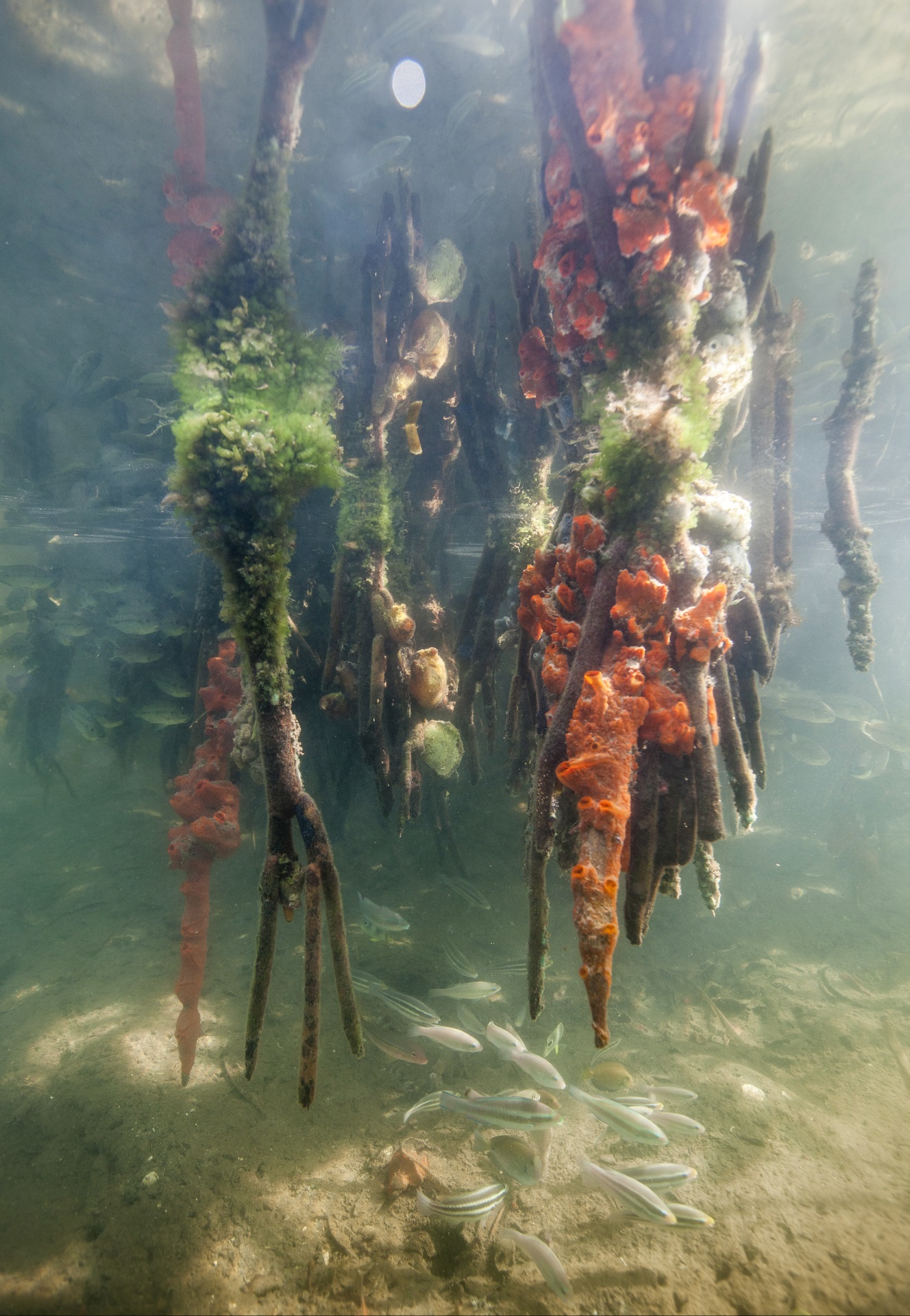One of the ocean’s greatest services is its fisheries that provide a critical part of the human diet worldwide
Ecosystems as Fish factories
- Approximately 95 percent of all commercially important fish species depend on coastal habitats
- Mangroves with high fish production values are found on every continent and in most mangrove countries worldwide
- 19 fish species were enhanced by oyster reefs in the Gulf of Mexico, while 12 species were enhanced on the Eastern seaboard of the US
- In Australia, a single hectare of seagrass generates a commercial fishery enhancement worth approximately US $24,000
Our Projects
Global Coral Reef Fisheries

The global map of fish catch considers four elements:
- the reef productivity
- local fishing intensity
- international fishing for key target species
- management influences
The expected background productivity of reefs made a simple allowance for lower productivity on Caribbean reefs, as well as the reduction in productivity, which is observed in areas where human impacts degrade reefs. We then predicted local fishing pressure, assuming a direct correlation with the size of local human populations, further influenced by possible access to larger markets.
We also recognized that not all reef fishing is local. There is also a worldwide harvest of very high value species: sharks, large groupers and snapper, in particular, are now of sufficient value in markets, notably in East Asia, that they support a truly global fishery. Rarely sustainable, and often illegal, such fishing for key target species affects almost every coral reef in the world, with remoteness offering little protection. The final minor modification to our model was to take into account reef management. For this we factored in the role of no-take fishing reserves. In the model, we assumed that these would have increased fish populations inside (which could not be fished), but that such reserves would also enhance fishing opportunities in a halo around their parameter.
Regional Analyses of Coral Reef Fisheries
Micronesia, the Bahamas, Florida, and the Eastern Caribbean
TNC worked with Dr. Alastair Harborne, currently of Florida International University to map coral reef fisheries in Micronesia, the Bahamas, Florida, and the Eastern Caribbean . The key aims of this work were to model and map fishing pressure, model and map the current value of coral reef fisheries (current fish standing stock), and assess the potential benefit of conservation and management measures, such as the potential standing stock on a reef if fishing was managed through the establishment of no-take reserves or other fisheries management tools. Read more about these projects here [Micronesia], here [Bahamas], here [Florida], and here [Eastern Caribbean].
Recreational Fishing
Recreational fishing in coastal and offshore waters is a globally distributed, high-value activity with numerous benefits such as health, wellbeing, jobs, income, travel, accommodation, and conservation. There are an estimated 220 million recreational fishers in the world, greatly outnumbering commercial fishers in many countries. Even so, recreational fishing’s contribution to total catches is small compared to commercial fish catches, with marine recreational catch estimated at 900,000 tonnes in 2014. Despite lower overall catches at global scales, unsustainable practices in recreational fishing can have impacts on ecosystems and social and economic benefits. It is therefore critical to understand and communicate the value of such fisheries, as a means to support enhanced management and to generate ongoing benefits for fishers, ecosystems and coastal communities.
A study led by Ball State University and The Nature Conservancy explores new methods for quantifying and valuing recreational fishing, focusing on user-generated content from fishers and key market suppliers. A key data source for this work was one of the world’s biggest recreational fisher apps. Such apps are used by fishers to help them to choose fishing destinations, provide a sort of journal of their catches, and probably also give them a sort of bragging tool. With colleagues in Ball State University, we worked with over ten years of catch records which we shaved down to look at marine and brackish species caught in coastal and offshore waters. The report and maps can be found here.
Global Mangrove Fisheries
Our initial global model of mangrove fisheries was built up front a detailed review of hundreds of studies from around the world, and informed by an expert panel. In terms of natural productivity, the most important areas are those with high input of freshwater and nutrients notably focused around estuaries, deltas and lagoons, particularly in the wet tropics. Fishing effort of course is uneven, but centered in areas where high populations live close to mangroves, or where smaller fishing populations may nonetheless have access to urban markets.
Our output map shows that high value mangroves are found on every continent and in most mangrove countries worldwide.continent and in most mangrove countries worldwide. Mangroves are of highest value precisely where humans and markets are concentrated. Although not surprising, decision-makers often overlook these factors: the apparent gains to be had from converting mangroves to urban, agriculture or aquaculture are rarely, if ever, weighed against the huge costs of reduced food security and livelihoods.
The improved understanding that comes from this work offers new opportunities to protect and better manage mangroves worldwide. The sustainable provision of food for vulnerable coastal populations is a benefit that cannot be replicated easily. Economic values are only part of the story of course, but existing studies show values ranging from hundreds to many thousands of U.S. dollars for just one hectare of mangrove every year. Such values are sufficient, in many areas, to counter demands for clearance or conversion of mangroves to aquaculture or coastal development. In many places, the derived values are sufficiently large to justify considerable mangrove restoration efforts in the many areas where they have been lost.
Oyster Restoration Goals
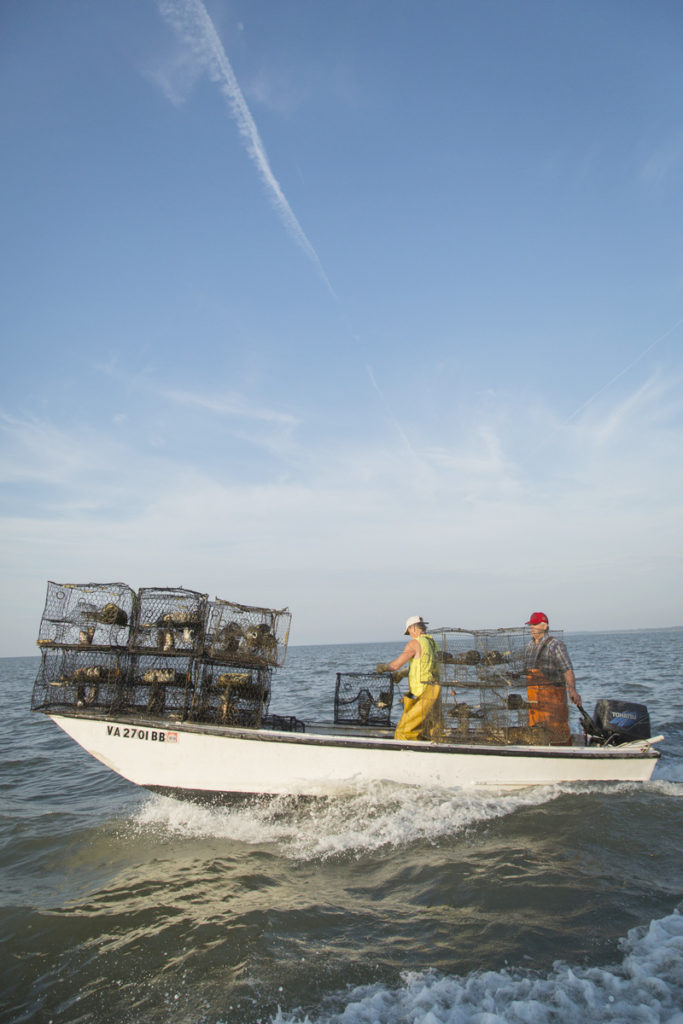
We compared the numbers of fish and crustaceans in or directly adjacent to oyster reefs to numbers away from reefs. This approach enables us to quantify of the “enhancement” role that the reefs play. The same species still survive without the oysters, but where there are healthy reefs they thrive. Often, larvae or sub-adults make up the throngs of fish around oyster reefs: many species find refuge here in their early life. Accordingly, even fish caught far from oysters may still depend on the complex sheltering structure of the oysters. We sought to quantify this life-long enhancement benefit from oyster reefs. Uniquely, we also sought to build a model that would capture the variability in this enhancement, and enable us to build the same uncertainty in our estimates.
We found that nineteen species were enhanced by oyster reefs in the Gulf of Mexico, while twelve species were enhanced on the Eastern seaboard of the US. One hectare of oyster reef in an estuary in the Gulf of Mexico will generate millions of extra larvae in the ecosystem. Only a fraction will reach adulthood, but a fraction of a very large number is still a large number. From the perspective of fishers, it looks like this—one hectare of healthy oyster reef in a place like Matagorda Bay will generate an extra 32,000 crabs of fishable age, just from a 100 meter –by-100 meter patch.
Scaling up to the bays and estuaries on the Gulf and Mexico and the Eastern seaboard of the US, we have a good picture of the total oyster reef extent in 31 of the major bays, and from these alone we find that oyster reefs are generating in the order of 185,000 (plus or minus 45,000) metric tons of fish to the ecosystem, year on year. These are additional to populations that would occur in the absence of such reefs. View map here.
Pelagic Fisheries
The Mapping Ocean Wealth Team in Indonesia, working with partners in the Center for Coastal and Marine Resources Studies (CCMRS) and with Bogor Agricultural University (IPB), developed a model of pelagic productivity using data on temperature and sea-surface productivity for the Lesser Sunda Islands in Indonesia. Read more here.
Working with Northeastern University, The Nature Conservancy also explored the fisheries value of Cashes Ledge, located off the northeastern United States. Read more about this pilot project here.
Saltmarsh and Seagrass Fisheries Enhancement in the US
The MOW team are developing novel approaches to estimate fish and mobile invertebrate production enhancement arising from the nursery function of structured habitats. These habitat valuation approaches synthesize thousands of fish and invertebrate samples across ecoregions in the United States to estimate the production enhancement, or the annual biomass which can be attributed to the growth of the additional individual fish, crab and shrimp that recruit to the system as a result of the presence of the structured habitat. Read more here about this approach, and explore the MOW decision-support tools that utilize this research to estimate production enhancement from salt marsh, seagrass and oyster reef habitats.
Seagrass Fisheries Enhancement in Australia
We located 11 studies from the coastal waters of temperate Australia. All of these had looked at the differences in abundance of fish over seagrass beds compared to unvegetated adjacent waters. Focusing on just 12 commercially important species, the results are astonishing. A single hectare of seagrass is generating some 30,000 additional fish to the community, equivalent to one kilogram of fish for every square meter. Using simple market values such a seagrass bed, just one hectare would generate a commercial fishery enhancement worth some US$24,000.
Additional Information
Ecosystems
Top image: © Ian Shive. Photo Credits in Text: © Peter Frank Edwards, © Ami Vitale, © Jeff Yonover. Tiles (top left to right): © Jeff Yonover,© Tim Calver, © Clay Bolt, (bottom left to right): © Donna Squire, © Ethan Daniels, © Tim Calver

